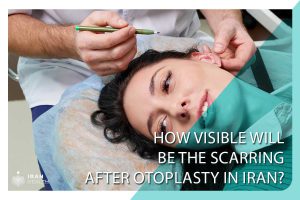Otoplasty in iran, also known as ear correction surgery, is a cosmetic surgery in Iran that there are many questions about it. However, cosmetic surgeons expect patients to ask questions in order to move forward and try to achieve peace of mind by eliminating the anxiety about the procedure.
1.Can the ears move after Otoplasty in Iran?
Otoplasty in Iran is highly successful procedure in terms of results and patient satisfaction, but it is understandable that many patients are concerned about the position of their ear and whether it will remain in the corrected area.
The fact is that after ear correction operations, a slight displacement of the position of the ears is very common. However, the movement should not be noticeable and in some cases cosmetic surgeons adapt to this slight movement during surgery.
After surgery, you should wear a headband 24 hours a day for up to two weeks. Then just wear it at night for another six weeks. This is because the headband is part of the healing process as it helps to prevent the ears from moving and help in healing in new position.
Most patients who complain with more than minor movements, shorten their recovery period and stop wearing a supportive headband. The result is that the ears can move more than a few millimeters forward.
Therefore, it is important to keep the headband in place for the recommended period of time as it will be useful for you in the long run.

2.Is it possible to reduce the size of the earlobe?
Earlobe reduction is a method that has been readily available for many years. It is often performed as part of a facelift or other ear correction procedures.
However, it is becoming increasingly common for patients to request cosmetic surgery in Iran on their earlobes as a single procedure without any other surgery.
Ear lobe reduction can be done in a variety of ways, but usually involves small incisions or laser treatment to remove unwanted tissue.
3.Can the ears be made smaller but retain their shape?
The ears can be made smaller with Otoplasty in Iran, but because each patient is different, it is difficult to maintain the shape exactly as before, especially without visible scars.
The type of incision needed to reduce the size of the ears can sometimes leave a visible scar behind the ear that may affect the shape and change it from its original position.
However, a good surgeon can change your ears and reshape them during surgery in order that they are as close as possible to their original shape, but with a decreased size.
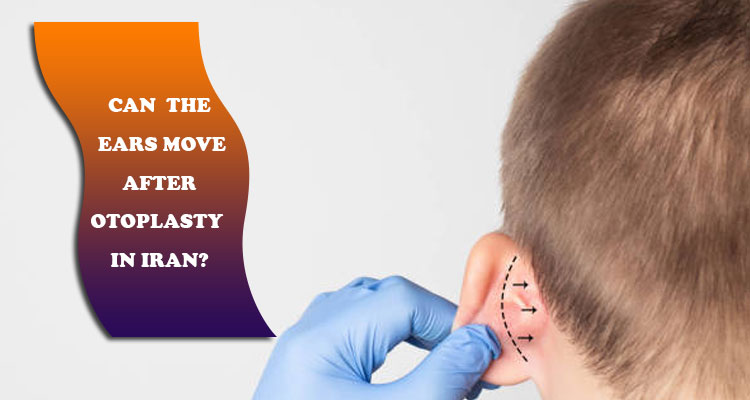
4.Can I continue exercising after Otoplasty in Iran?
Realistically, patients undergoing ear surgery in Iran should refrain from exercising for 2 to 6 weeks after their surgery.
Although this procedure may not seem as important as some other cosmetic surgery in Iran, the recovery phase is just as important.
Not only do you need a recovery headband in your next aftercare plan, but the risk of ear damage is very high.
Depending on the type of exercise you do, there is a risk of ears being hitted, pulled or pressed, resulting in movement and pain. Any accident can jeopardize the results of Otoplasty in Iran in the long run.
5.To what extent can the ear be pinned?
The ear can be pinned to the head as much as needed, while having a natural look.
A cosmetic surgeon can evaluate each patient on a case-by-case basis to see how much their ears need to be pinned, what the patient wants, and what is realistic to avoid looking unusual.
Most ears are not always perfectly symmetrical, and one ear may need to be pinned further back than the other to get the desired new look.
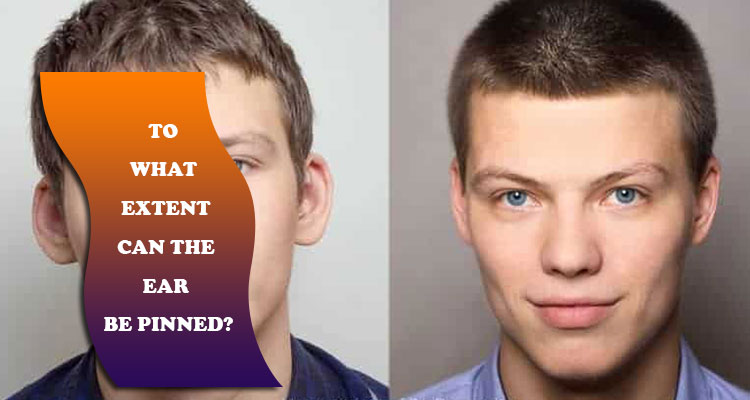
6.How long after the cosmetic surgery are the results of the surgery visible?
The recovery period after cosmetic ear surgery in Iran is very short, but to see the final results, you have to wait at least 4 to 6 weeks for the swelling caused by the surgery to disappear completely.
7.What is the best age for cosmetic ear surgery?
Cosmetic ear surgery in Iran is possible after the age of 5 to 6 at any age, but it is better to perform this surgery at the age of 6 to 8. To perform this surgery, the growth of the ears must be complete, by consulting a doctor, the best time to perform this surgery will be determined for you. Performing this surgery in childhood can bring better and more desirable results because in this period the cartilage of the ears is more flexible.
8.What are the warning signs after ear surgery?
If you have any of the following symptoms, you should contact your surgeon immediately:
- If you have shortness of breath, chest pain, or a rapid heartbeat
- If the wound is infected or the healing process is slow
- If you bleed too much
9.How long does the recovery period after Otoplasty in Iran take?
The postoperative recovery period varies from person to person, and like any other surgery, some people recover faster than others. Adults and children usually get up within a few hours of surgery. However, if the patient is a child, you may prefer to keep your child in the hospital overnight, until all the effects are gone after the general anesthesia.
You will feel pain and discomfort in your head and ears for a few days after the operation, and you can take painkillers to manage this. Immediately after the operation, the patient’s head is bandaged, which is removed after a week and replaced with a much lighter dressing.
The lighter dressing is like a headband and should be on the head and ears for 24 hours a day. Recovery time is 5-7 days for adults and a week or more for children.
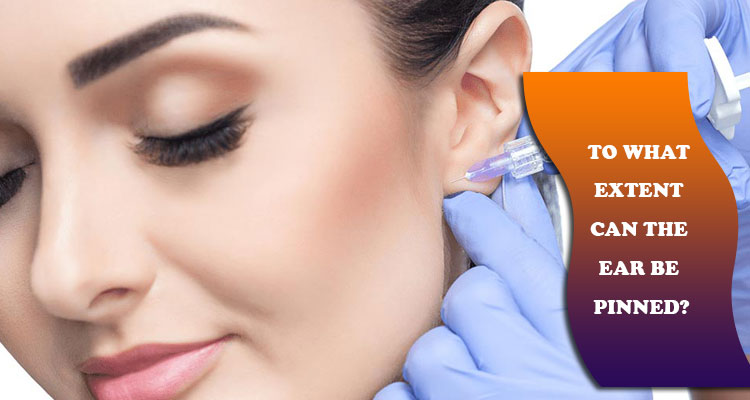
Related post you can read: How visible will be the scarring after otoplasty in Iran?
You can return to work after this time, but you should avoid any exercise that requires physical contact for at least a month. Any activity that may cause the ear to bend should be avoided for at least a month. Children can return to school after seven days, as long as they are careful about the activities done in the playground.
10.When will I be able to wash my hair after surgery?
The recovery period after surgery can be difficult not only because of the pain, but also because of restrictions on activities such as showering or bathing.
Your doctor will advise you to do all the necessary things such as showering, bathing, washing your hair and shaving your beard the day before surgery, and so on.
In this case, you know that you have done your work and not doing it for a few days will not be a problem. After ear correction surgery, you should wear ear bandages for 3 to 4 days, and washing your hair during this period will be one of your limitations.
Once you have the approval of your nurse or surgeon to remove the dressing, you will be able to wash your hair, just do it gently.
11.Is Otoplasty in Iran permanent?
In general, yes; There is no reason for the ear to return to its original condition as long as you do well in postoperative care during recovery.
Reconstructive surgery by your doctor will be performed when the patient finds that the amount of change is not enough – usually when one ear protrudes slightly more than the other.
However, all of this depends on the realistic expectations discussed with the surgeon during the consultation.
12.If I have otoplasty surgery, will my hearing be affected?
The effect of Otoplasty in Iran on hearing is very rare. The auditory mechanism is affected by the middle ear. Sounds pass through the external auditory canal and reach the eardrum and ossicles (three bones in the middle ear); finally, before being transmitted to the brain, the sound reaches the cochlea. Canal narrowing can affect hearing in people whose incision is too close to the external auditory canal.
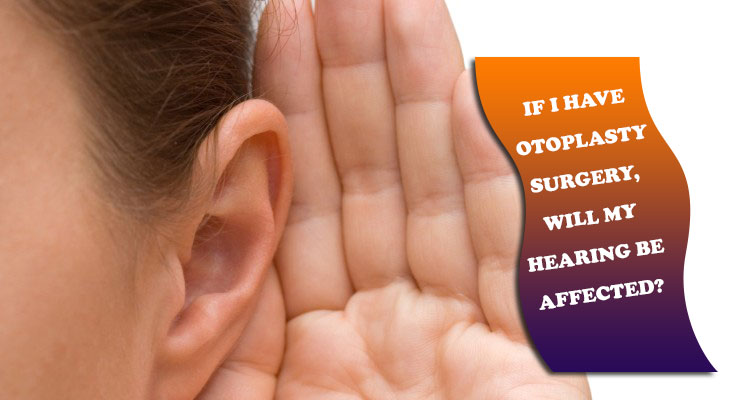
13.What technique is used in my ear surgery in Iran?
The technique used in each person’s ear surgery in Iran depends on his or her ear problem. One of the most common techniques is for the surgeon to make a small incision behind the patient’s ear to expose the cartilage of the ear.
The cartilage is then formed, bent towards the patient’s head, and then the ear is sutured to preserve the new shape of the ear.
Another technique involves making a similar incision in the back of the ear in which the skin of the ear is removed and sutured so that the cartilage itself folds backwards, and the shape of the ear changes without removing the cartilage. In most cases, after ear surgery, a mild scar develops behind the ear that disappears over time.
14.Do I need to prescribe certain medications before surgery?
Most patients do not need special medications prescribing before surgery. You should tell your doctor about any specific problems or illnesses you have.
Doctors will ask you to start taking vitamin C (which speeds up the healing process) a week before surgery. Take vitamin C three times a day with food. You are not allowed to eat or drink anything after midnight the night before procedure.
15.What if someone has a history of scarring?
If you have had your ears pierced before, how well your ear heals at that time is a good sign that you can guess how your recovery will be after cosmetic facial surgery.
Wounds on other parts of the body usually do not indicate how patients will heal after facial plastic surgery and whether the person will develop a scar.
When consulting, be sure to show your doctor any scars you already have and worry about (sometimes called colloidal scars or excess flesh) so your doctor can make a realistic assessment of your potential for recovery after surgery
16.How obvious are otoplasty wounds?
Wounds and incisions are important in “otoplasty surgery“. The wounds will typically be permanent, between the ear and the skull. The scar will usually not be visible unless you pull the ear forward. The use of silicone sheets or gels is advised to reduce scarring.
17.What are the risks of ear surgery?
Otoplasty in Iran will be a very safe and satisfactory surgery with proper postoperative care, which will have very few risks (complications of Otoplasty). Possible problems with this surgery can include a reaction to numbness, bleeding, infection, blockage of blood vessels, ulceration, dissatisfaction with asymmetry and its beauty.
18.How much does otoplasty surgery cost?
The cost of an Otoplasty in Iran depends on a number of factors, including the length of time the surgery is performed, the reshaping, and the anesthesia substances required. Surgeries performed using painkillers or local anesthesia are usually less expensive than those that require general anesthesia.

19.Is it possible to perform otoplasty for only one ear?
Otoplasty in iarn can be done on one ear only, but it is only done in rare cases. If one side protrudes significantly more than the other, only one side seems to protrude. Your doctor will take accurate measurements to check the position of both ears. In most cases, both ears have problems and both need to be corrected to fit.
20.What are the prerequisites for preoperative period?
Quit smoking for at least three weeks or a month (during this time you can use nicotine-containing chewing gum labels or pills).
- at least 5 years old
- Do not take aspirin or any herbal or industrial blood thinner to significantly reduce the risk of bleeding after surgery.
- No history of recurrent ear infections
- Not having heart disease or any serious underlying disease
- Mental and psychological readiness to perform the operation

